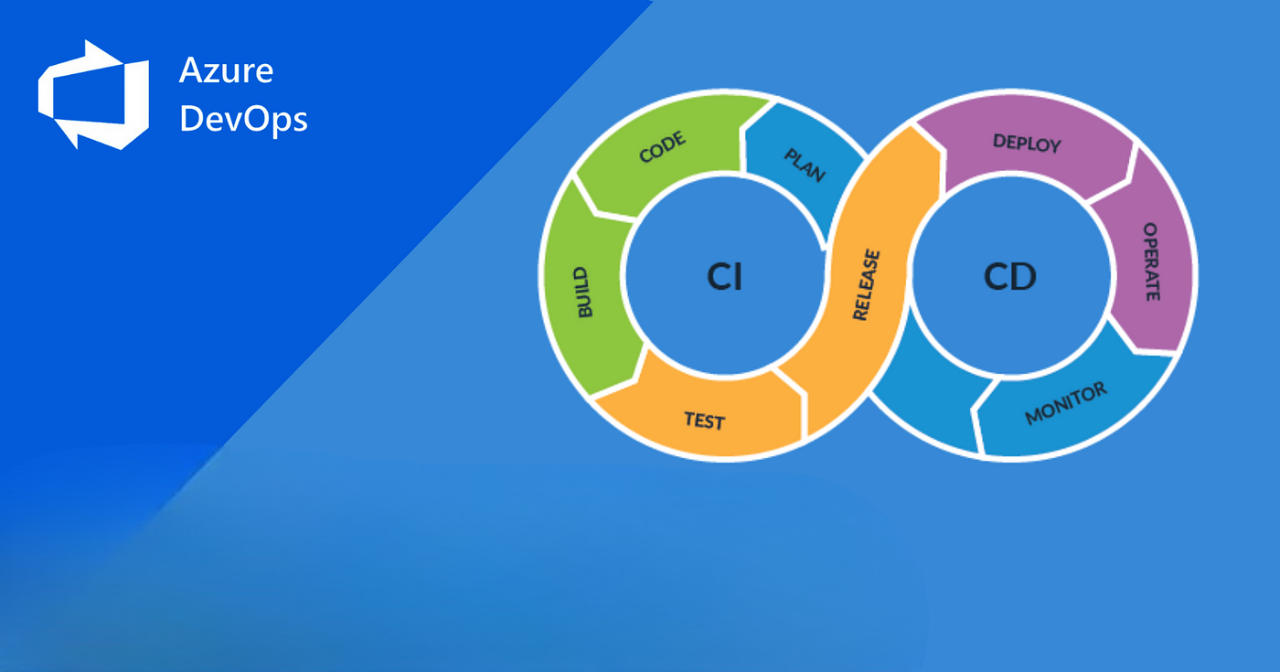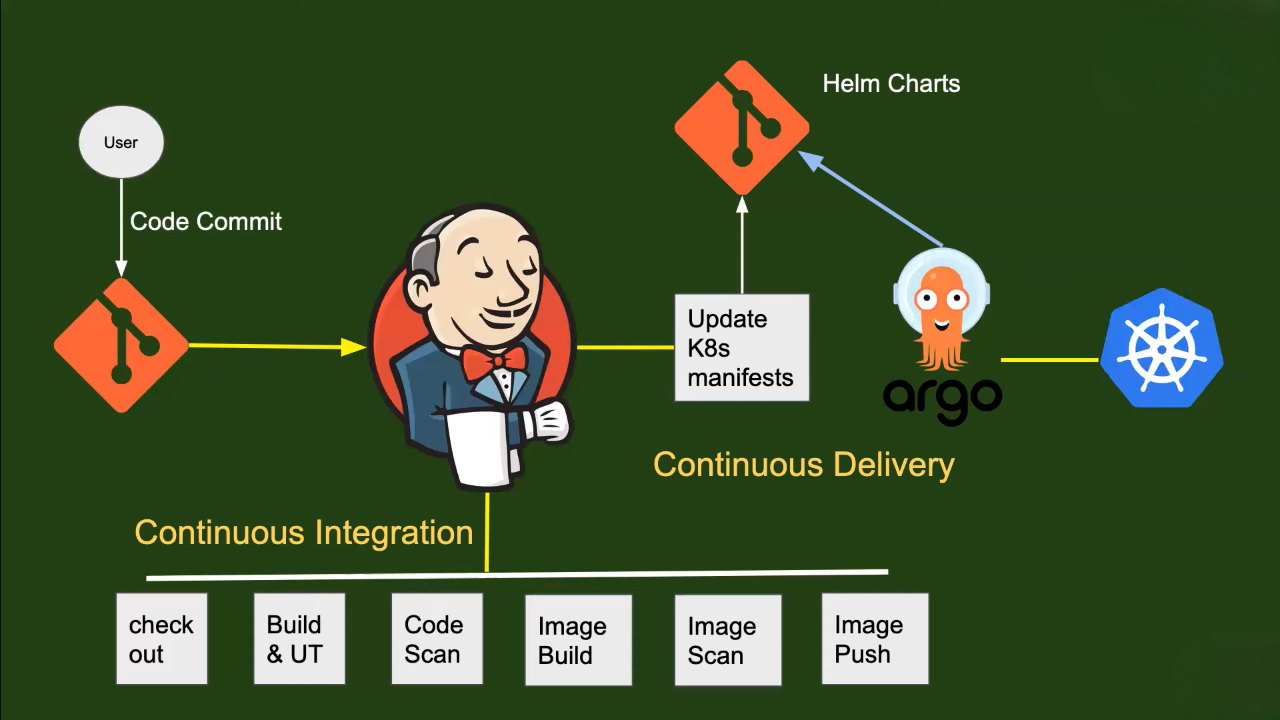Mastering CI/CD: A Beginner's Guide to Streamlined DevOps Practices
 Hema Sundharam Kolla
Hema Sundharam Kolla
What is CI/CD?
Introduction
In today’s fast-paced development environment, continuous integration and continuous delivery (CI/CD) are essential for efficient and reliable software deployment. This article explores how Jenkins and Kubernetes, along with Docker and Helm charts, facilitate CI/CD, ensuring seamless application updates and deployments.
DevOps Workflow Overview
Code Commit:
- Developers commit their code to a Git repository. This initiates the CI/CD pipeline.
Continuous Integration (CI):
Jenkins, an open-source automation server, plays a pivotal role in the CI process. The following steps are typically involved:
Checkout: Jenkins pulls the latest code from the Git repository.
Build & Unit Testing (UT): The application is built, and unit tests are run to ensure code quality.
Code Scan: Static code analysis tools scan the code for potential issues.
Image Build: Docker is used to build images for the application components.
Image Scan: Security scans are performed on the Docker images to identify vulnerabilities.
Image Push: The validated images are pushed to a Docker registry.
Continuous Delivery (CD):
After successful CI, the delivery process ensures the application is always in a deployable state.
Update Kubernetes Manifests: Jenkins updates the Kubernetes (K8s) manifests with the new image tags.
Helm Charts: The updated manifests are pushed to a Git repository containing Helm charts, which define, install, and upgrade Kubernetes applications.
Argo CD: Argo CD, a continuous delivery tool for Kubernetes, monitors the Helm repository for changes and updates the Kubernetes cluster accordingly.
Detailed Steps and Tools
Jenkins Pipeline Configuration:
The Jenkins file defines the CI pipeline. Here’s an example:
pipeline { agent any stages { stage('Checkout') { steps { git 'https://github.com/your-repo.git' } } stage('Build & UT') { steps { sh 'make build' sh 'make test' } } stage('Code Scan') { steps { sh 'static-code-analysis-tool' } } stage('Image Build') { steps { script { dockerImage = docker.build("myapp/component") } } } stage('Image Scan') { steps { sh 'docker scan myapp/component' } } stage('Image Push') { steps { script { docker.withRegistry('https://registry.hub.docker.com', 'dockerhub-credentials') { dockerImage.push("${env.BUILD_NUMBER}") dockerImage.push("latest") } } } } } }
Continuous Delivery with Helm and Argo CD:
Helm Charts: Define your application’s Kubernetes resources in Helm charts. Example structure:
my-chart/ ├── charts/ ├── templates/ │ ├── deployment.yaml │ ├── service.yaml ├── Chart.yaml ├── values.yamlArgo CD Configuration: Argo CD monitors the Helm repository and applies updates to the Kubernetes cluster. Configuration might look like:
apiVersion: argoproj.io/v1alpha1 kind: Application metadata: name: my-app namespace: argocd spec: project: default source: repoURL: 'https://github.com/your-helm-repo.git' targetRevision: HEAD path: my-chart destination: server: 'https://kubernetes.default.svc' namespace: default syncPolicy: automated: prune: true selfHeal: true
Benefits of CI/CD with Jenkins and Kubernetes
Automation:
- Reduces manual intervention, speeds up deployments, and ensures consistency.
Scalability:
- Kubernetes handles scaling of applications based on demand.
Reliability:
- Automated tests and scans ensure code quality and security.
Flexibility:
- Helm charts and Argo CD provide flexible and powerful tools for managing Kubernetes applications.
Conclusion
In conclusion, CI/CD practices are vital for modern software development, enabling teams to deliver high-quality applications efficiently and reliably. By leveraging tools like Jenkins, Kubernetes, Docker, Helm charts, and Argo CD, organizations can automate their workflows, ensure scalability, maintain code quality, and enhance deployment flexibility. Embracing CI/CD not only accelerates the development process but also fosters a culture of continuous improvement and innovation.

Subscribe to my newsletter
Read articles from Hema Sundharam Kolla directly inside your inbox. Subscribe to the newsletter, and don't miss out.
Written by

Hema Sundharam Kolla
Hema Sundharam Kolla
I'm a passionate Computer Science student specializing in DevOps, cloud technologies, and powerlifting. I've completed several certifications, including AWS Cloud Practitioner and Google’s Generative AI badge, and I'm currently exploring both AWS and Azure to build scalable, efficient CI/CD pipelines. Through my blog posts, I share insights on cloud computing, DevOps best practices, and my learning journey in the tech space. I enjoy solving real-world problems with emerging technologies and am developing a platform to offer career advice to students. Outside of tech, I'm a competitive powerlifter, constantly striving to improve and inspire others in fitness. Always eager to connect with like-minded individuals and collaborate on projects that bridge technology and personal growth.